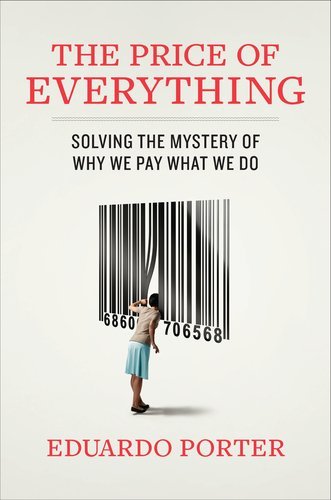
The Price of Everything: Solving the Mystery of Why We Pay What We Do
Book Description
What if the true value of everything we buy is hidden in plain sight? Eduardo Porter takes readers on an electrifying journey through the unseen economics that shape our world. As he unravels the mysterious forces behind pricing, he reveals how societal values, cultural differences, and individual choices collide in a captivating dance of demand and desire. From coffee beans to luxury cars, each cost tells a story that transcends mere numbers. With every revelation, the stakes rise: are we really paying what things are worth, or are we caught in a web of illusion? What’s the real price of our choices?
Quick Book Summary
"The Price of Everything" by Eduardo Porter explores the complex and often hidden mechanisms behind why we pay what we do for everyday goods and services. Far from being determined solely by market forces, prices reflect a tapestry of cultural norms, psychological factors, historical accidents, and social expectations. Porter uses vivid examples—from the cost of an apple to the price of human life—to reveal how these influences shape our perception of value. Throughout the book, he demonstrates that prices are not just economic signals, but also mirrors reflecting our values, priorities, and sometimes contradictions. In doing so, Porter urges readers to think critically about the true costs embedded in the things we consume and the profound impact that pricing decisions have on society at large.
Summary of Key Ideas
Table of Contents
How Values Shape Price
Porter begins by laying out the central premise: prices are not dictated entirely by simple supply and demand, but also by what societies and individuals truly value. He illustrates this through examples such as wages, the cost of health care, or even how we calculate the value of statistical life. These highlight that what something is worth transcends mere production cost—it's deeply influenced by our collective morals, emotions, and priorities. Pricing thus becomes a lens through which we can examine cultural shifts, ethics, and systemic inequality, revealing much about our social fabric.
The Influence of Scarcity and Abundance
Scarcity and abundance are primary drivers in determining price, but their effects are far from straightforward. When a resource becomes scarce, its price rises not only because of practicality but because scarcity itself is seen as a signifier of value. Porter goes beyond basic economics, exploring how governments, corporations, and even individuals manipulate or respond to scarcity—through hoarding, rationing, or innovation—and how these responses shape market dynamics. Conversely, abundance can make items suddenly seem less desirable, showing how perception, rather than any absolute measure, drives value.
Cultural and Psychological Dimensions of Pricing
Pricing is not immune to culture and psychology. Porter discusses cultural norms that influence why certain goods command premium prices in some societies and are undervalued in others. He examines psychological biases—such as anchoring, loss aversion, and the placebo effect—that cause people to perceive prices irrationally. These mental shortcuts can lead to both overpaying and undervaluing, with marketers exploiting these biases in everything from sales to luxury branding. Thus, our willingness to pay is often less rational than we assume.
Unintended Consequences of Pricing Decisions
Many of the book’s most compelling insights come in examining the unintended consequences of pricing choices. When prices are set by policymakers or businesses without understanding deeper societal impacts, distortions can result—ranging from incentivizing harmful behaviors (like overfishing due to underpriced permits) to exacerbating inequality (when vital services are priced out of reach for the poor). Price signals influence decisions in unpredictable ways, often amplifying existing systemic issues rather than solving them.
The Social Impact of What We Pay
Finally, Porter brings the discussion back to broader social implications. Prices drive who gets access to resources, opportunities, and even dignity. The way societies choose to price public goods—like education, healthcare, or clean water—becomes a moral question as much as an economic one. Porter encourages readers to look beyond the price tag, urging thoughtful consideration of hidden costs and ethical dimensions, and to recognize that rethinking how we value things can lead to a more equitable world.
Download This Summary
Get a free PDF of this summary instantly — no email required.





